We drove west into the setting sun, already shadowed by the approach of a heavy cloud bank. The put-in was only a few minutes’ ride from our campsite, and we spent it mostly in silence.
“I’m kind of nervous,” I said at last.
“Me too,” JT answered quickly, as if he had been thinking the same thing, or had been about to say it himself.
Both of us had night fished before, and were accustomed to the weirdness of a nighttime river, to the row-by-feel navigation, the neck-prickling animal sounds from the black woods, and the exhausted timelessness of the blurry pre-dawn hours. But neither of us had ever done anything quite like this.
Historical DNR data, old-timer rumors, and satellite map scouting had brought us to this point. We’d tried to wade-fish the stream first, upstream from the bottom bridge. But it was too deep, and the bottom too soft: soupy sand that felt bottomless, and grey marl that was sticky and slippery at the same time. Every other bend held a vibrating logjam or a black-bottomed hole. The banks were high and unclimbable, brushy marsh-meadow, undeveloped, unwelcoming, unwalkable — and privately owned.
So we put my small canoe in at the only other bridge, five miles upriver. The stream meandered severely across an ancient seabed plain, glowing with a greenish glacial tint, constantly reversing into hairpin corners with deep, light-shafted holes and cavernous black undercuts. It was choked with wood. Driftwood logjams, bridging deadfalls, leaning living white pines and cedars. Willows and alders trailing curtains of foliage. Petrified in the icy water were logs of all sizes, some saw-cut generations ago, some dead far longer, jutting from the side of the bank, buried in eight feet of sand and marl.
Around and through these we hauled and scraped and portaged. Nobody had been in here with a chainsaw, maybe ever. Certainly nobody in a boat with oars. No phone service. No manicured lawns or cabins with porch lights to offer touchstones of humanity along the way — or respite if we were to get in trouble. We were in for the full five miles, bridge to bridge, no matter what happened.
But we had to float it again. That night. Because visible in the vertical sunlight, deep in their holes, squirting from beneath the canoe’s shadow, we’d seen fish. Black-spotted backs diagnostic of brown trout, larger than life. And then, halfway through the float, we found a recently-dead trout — of old age, presumably — that we measured at a no-shit 28 inches long.
If we paddled thoughtfully and remembered the deadheads and sweepers we should be fine; the canoe had proved responsive to our strokes and we had proved able in our joint handling of it in tight spots. We had digital and analog navigation aids and extra batteries for our LED lights. And eight-weights. And mouse flies. And a big net.
And there was no way to get at this water, and these fish, but from a canoe, at night.
So: there we were, at the upper bridge, sunset upon us. A twinge of apprehension. Maybe actual fear. Once we let go of the bank and began moving downstream on the oily slick, it would be many hours and miles of severe darkness and skilled maneuvering before we could rest.
But we knew the trout were sliding out of their holes and undercuts now, cruising the shallow inside bends, the grassy pool-edges, looking for frogs and mice.
With rainclouds mustering and distant lightning silently flickering, we carried the fifteen-foot aluminum Grumman Aircraft Eng. Corp. double-ender canoe through the head-high ditch-grass and lowered it several feet down to the water. I handed down to JT our rods, packs, and paddles, and we neared our event horizon. The current, irresistible as gravity, was about to take us somewhere black and unknown.
"Ready?"
"Yep."




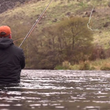
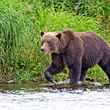

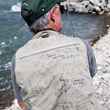


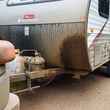
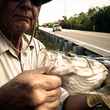


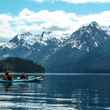
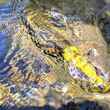



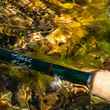
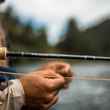



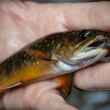
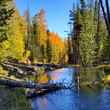



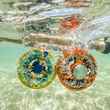
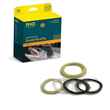
Comments